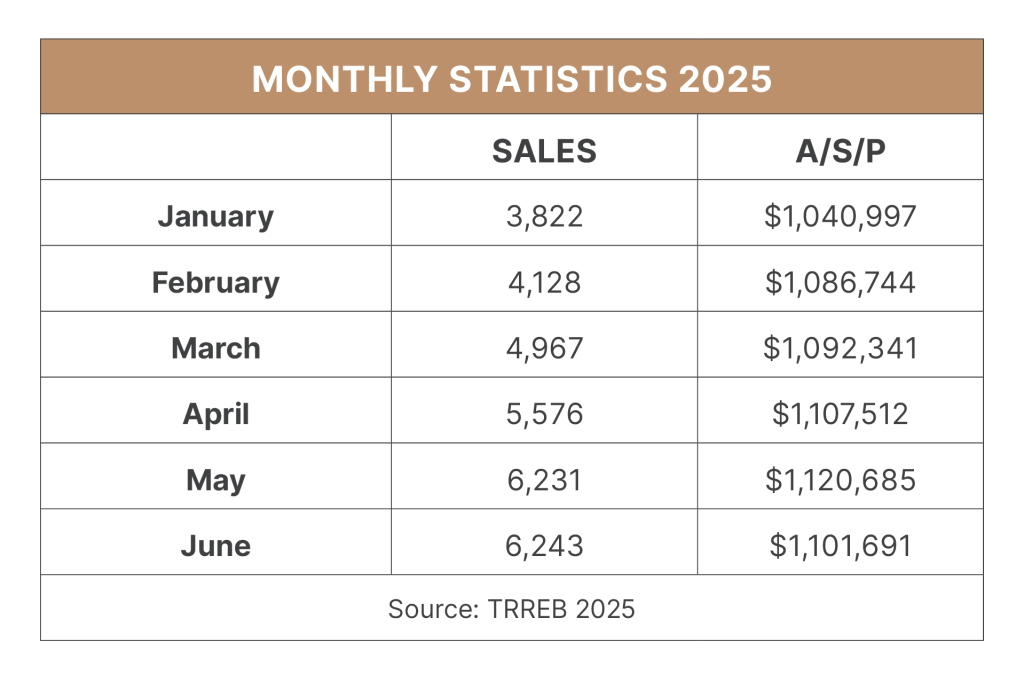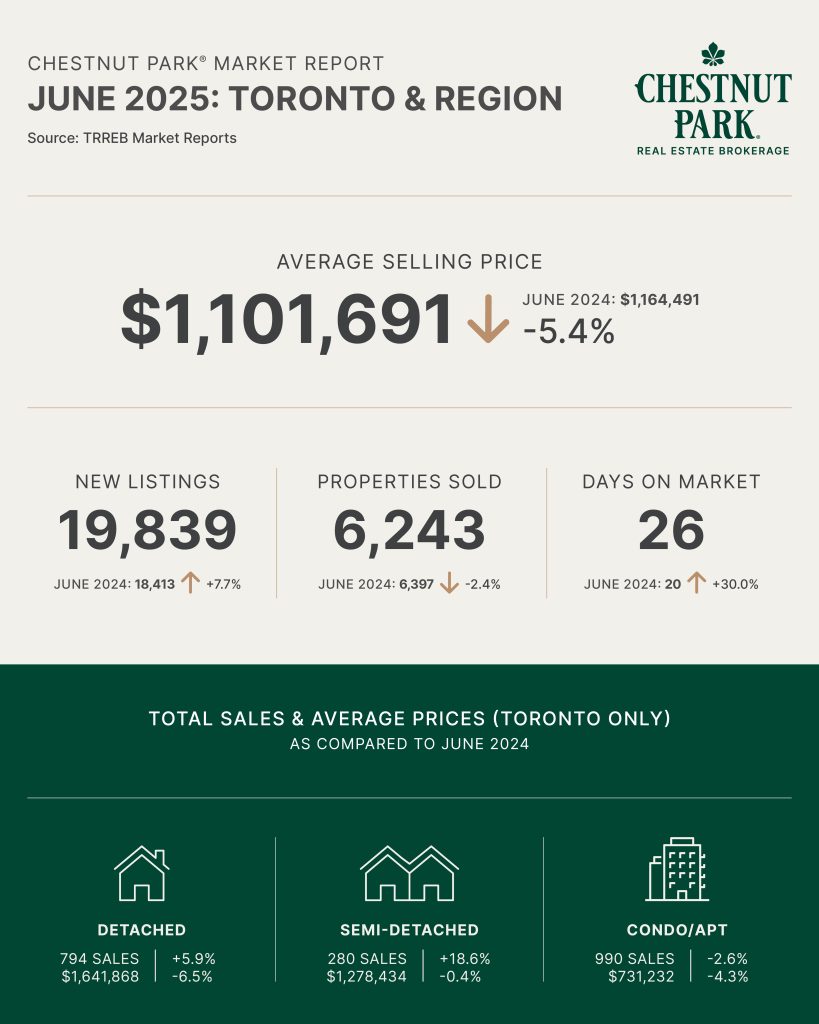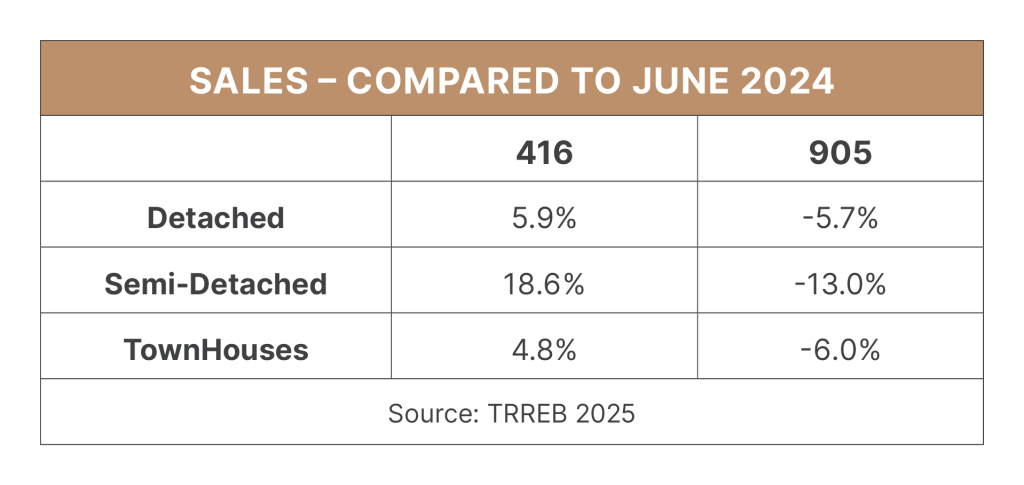The Toronto and Region residential resale numbers for June are a mix of good, bad and strange news. Let’s begin with the good news.
In June, the Toronto Regional Real Estate Board reported 6,243 home sales. Although the number of reported sales was 2.4 percent fewer than the 6,397 reported sales last June, the comparison was the smallest negative year-over-year variance of 2025. For example, the negative variance was more than 23 percent in April and over 13 percent in May. Also, June represented the 5th consecutive month that saw an increase in sales compared to the month before.

The resale market has developed momentum through the first half of 2025. The resale market stalled at the beginning of the year when tariff and economic uncertainty initiated by the Trump administration caused buyers to freeze and to put buying on hold, particularly when they received no help from the Bank of Canada and mortgage interest rates have remained above 4 percent. It appears that as the year has progressed, buyers – at least some of them – have adjusted and have now entered the market.
On the negative side, two numbers can not be ignored – inventory and the average sale price for all properties reported sold.
During the month of June 19,839 “new” listings hit the market. More than 30 percent of all “new” listings are properties that have previously been on the market and did not sell. These new listings brought the total amount of active listings available to buyers by month-end to 31,603, a number approaching record levels. By comparison, during the month of June 2019, the year before the Covid-19 pandemic, the month of June ended with 19,655 active listings, slightly less than the total number of new listings that came to market in June of this year. These exceptionally high inventory levels – more than 33 percent of all available listings are condominium apartments – provide buyers with greater choice and more time to negotiate than they have had in years. These high inventory levels are having a direct impact on average sale prices.

In June the average sale price for all properties sold came in at $1,101,691, 5.4 percent less than the average sale price of $1,165,491 achieved last June. Condominium apartment sales contributed to the overall decline in average sale prices, but it was sales in the 905 Region that saw the largest decline in average sale prices. It is clear that average sale prices are drifting downward. Whether this is a long-term trend, or one driven by the high inventory levels and continuing high mortgage financing costs is yet to be determined.
On the strange side is the continuing and even wider bifurcation between the Toronto and the 905 Region resale markets. Whereas sales increased in every housing type (excluding condominium apartments) in the City of Toronto in June, they similarly declined in the 905 Region. Detached, semi-detached and townhouse sales in the City of Toronto increased by almost 10 percent in June. Similar type properties in the 905 Region decreased by over 8 percent. A dramatic inversion in the marketplace.
Similarly, but not nearly as dramatically, average sale prices between the City of Toronto and the 905 Region were also bifurcated. In the City of Toronto average sale prices decreased by 4 percent in June. In the 905 Region average sale prices decreased by 6.4 percent.

It would appear that the exodus to “sanctuary” housing in the 905 Region that began in 2020 during the pandemic is reversing. Buyers appear to have overcome their pandemic concerns and are moving back to the denser neighbourhoods of Toronto, particularly Toronto’s eastern districts where sales, especially of semi-detached properties, continue to sell with prices over asking, and in very short listing periods. In Toronto’s eastern districts all semi-detached properties sold at 108 percent of their asking price and in only 14 days. The market as a whole saw properties selling at 98 percent of their asking price and in 26 days.
Condominium apartment prices continued their decline in June, but both the decline in average sale prices and sales were less than in previous months. In June sales declined by 2.5 percent compared to last year, and the average sale price for the Region came in at $696,424, 4.5 percent less than last June. The average sale price for all condominium apartments sold in the City of Toronto came in a little higher at $731,232.
June’s numbers may be the beginning of a new resale market landscape. This landscape can be characterized as follows: moderately increasing sales numbers, persistently high inventory levels, and moderating average sale prices. Underlying this landscape is affordability, or lack thereof. Given prevailing household income levels and persistently high mortgage financing costs, for sales to continue to increase, pressure on sale prices will continue. The Bank of Canada meets at the end of July. A sharp drop in the overnight lending rate could trigger increased market activity. At this point the Bank of Canada is expected to make a modest 0.25 percent reduction to its lending rate.

